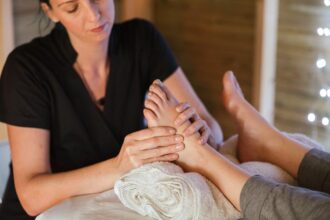Today, you’ve made a huge decision that will change your life forever. You’re going to reach out to a rehab center and get some help. The person on the phone will most likely discuss two different treatment methods that you can choose from.
There’s outpatient rehab where you live at home and attend weekly therapy sessions and inpatient rehab meetings where you stay at the center and receive treatment there. For initial treatment, we recommend going with the latter.
Inpatient rehabilitation is almost always more effective than outpatient for a variety of reasons. Many people avoid it, however, because they’re nervous about being away from home.
We might be able to quell your nerves a little. Check out this guide to learn what you can expect out of your treatment.
What Is Inpatient Rehab?
Before we talk about the program, let’s discuss what inpatient rehab is all about. As we said before, it’s a type of intense treatment that requires you to stay at the facility for an extended period of time.
This will require you to ask for time away from work or school for a while, and if you have children, you’ll have to find someone to watch them.
This being said, inpatient rehab for veterans isn’t for everyone. If you can’t make the right arrangements, you’ll have to stick with outpatient treatment.
The only problem is that it’s not as effective. Many people who don’t go through the inpatient rehab process end up having a relapse eventually.
How Long Is the Program?
The make or break for many people is the length of the program. Most programs last about a month. If you have special needs, you may have to stay for as long as 60 to 90 days.
The staff will do an assessment of your mental health, level of addiction, and physical health to determine which program length is best for you.
Preparing For Your Stay
When you make the phone call, you’ll go through a consultation process. The person on the phone will do an assessment to make sure that you’re right for the program that the facility offers.
They’ll mostly look at your past drug use, your family life, your mental health history, and any past treatments that you’ve had. This is also the part where the counselor will talk about the program and the rehab expectations that you’ll have to meet.
If you have any questions, you should take the time to ask them during this phase of the process as well. Once the phone call is over, it will be time for you to get packing if you’re approved for entry.
Packing
You won’t need to bring too much to the facility with you. Think about it as packing for a long vacation. You’re going to need clothes, first of all.
Most people bring toiletries with them as well as laundry detergent. If you think that you might get homesick after a week, we recommend bringing pictures that remind you of your loved ones. You’ll be surprised at how something that small can pull you through the program.
Bringing reading or writing material will stop you from getting too bored during your treatment. Some people even bring musical instruments to suit this purpose.
Other things you’ll need are a form of identification, an alarm clock, medical insurance information, and a list of medications that you’re taking at the moment.
Make sure you talk to the facility before you bring razors, a mouthwash that contains alcohol, nail clippers, or any electronic devices. They might have certain rules against it.
Make Proper Arrangements
Before you leave, you’re going to have to make certain arrangements. You can’t take time away from work or school without talking to someone.
Don’t worry about your job not being there when you get back. The American’s with Disabilities Act prevents employers from discriminating against their workers in this manner.
If you have a pet or child, you’ll need to find a friend or family member to watch them. Your bills don’t stop because you’re gone. You might have to give someone your bank account information so they can take care of this responsibility while you’re gone.
Prepare Your Home for Your Return
Any good that the rehab facilities do will be null and void when you get back if you don’t take strides to rid your home of temptation before you leave. Take a moment to walk around your home and toss out any paraphernalia and alcohol.
Don’t forget to go over your secret hiding spots and make sure those areas are clean as well. If you have any drinking buddies or drug dealer’s numbers saved in your phone, get rid of those while you’re at it.
What Is a Typical Day Like?
Being away from home can be nerve-wracking. It’s less so if you know what to expect out of your average day. Like any day, it starts with a good breakfast.
Early Morning Meetings
The reason why we told you to bring an alarm clock with you is that there is no such thing as sleeping in at a rehab facility. Your days start early. The good news is that you’ll have a nice breakfast waiting for you when you get out of bed.
Some rehab facilities also offer morning yoga and meditation to get the patients in a relaxed state of mind before their therapy session. In many cases, this first session focuses on group activity.
Daily Therapy
You won’t have a really intensive therapy session until after your lunch. You’ll attend a series of treatments that usually include a mixture of group, individual, and specialized therapy.
Individualized therapy is a one-on-one session, where you talk about your fears and concerns. Therapists use these sessions to help you identify your triggers and teach you how to cope with them in ways that don’t involve drugs and alcohol.
You’ll attend a group session with individuals who are going through the exact same thing that you’re going through. It makes it easier to talk about your personal experiences when you have other people doing the same thing.
People who attend these sessions usually end up forming a tight bond. You may even make a lasting friendship out of it.
Most people who turn to drugs have a deeper problem going on mentally. Specialized sessions tackle this problem, be it anger management or depression.
Evenings
In the evenings, you may attend one more small group session. Once your evening therapy is over, you’ll be encouraged to lay down for the night.
You’ll need your rest if you want to be alert enough to get the most out of your treatment. Again, mornings start early. You should take advantage of your sleep time.
Free Time
We know what you’re thinking. With all the time crammed into therapy sessions, when do you get a chance to breathe? In truth, most facilities set aside at least a few hours of the day for free time.
During this free period, you can do whatever you want. If you brought a book to read, now is the time to crack it open. Some places have amenities such as a swimming pool or ping pong table that you can take advantage of as well.
Aftercare
Your aftercare plan won’t be the same as another person’s plan. It’s specifically tailored to meet your needs. Your counselor will determine what this means.
You may need to live in a sober living home for a while. It’s less restrictive than in-patient rehab because you’ll be able to leave the house during the day to go to work or handle personal matters.
You will have to agree to mandatory drug tests, and there are curfews and rules that you’ll have to adhere to. You’ll also be expected to handle your share of the chores.
If you’re ready to start your normal life again, instead of going to a sober house, you can enroll in an outpatient program. You’ll be able to live at home with the stipulation that you attend weekly meetings.
Everything You Need to Know About Inpatient Rehabilitation
Are you ready to take your life back from drugs and alcohol? For many people, the path toward sobriety involves enrolling themselves in a great inpatient rehabilitation program.
Here you’ll be monitored by doctors and therapists who have your best interests at heart. You’ll also get the chance to attend group meetings with people who are suffering from the same thing as you. There’s some power in walking through the steps toward healing with others.
So what are you waiting for? Get on the phone with a rehab center today and find out what they can do for you. If you’re looking for more ways to power through addiction, check out our blog.












